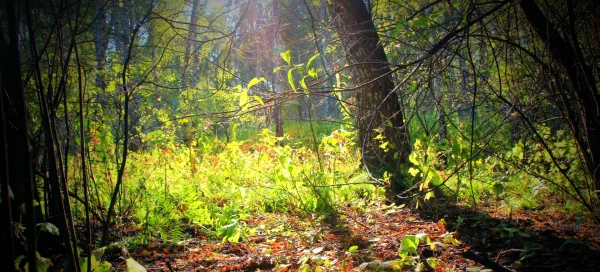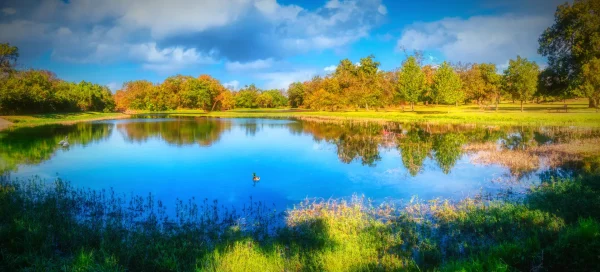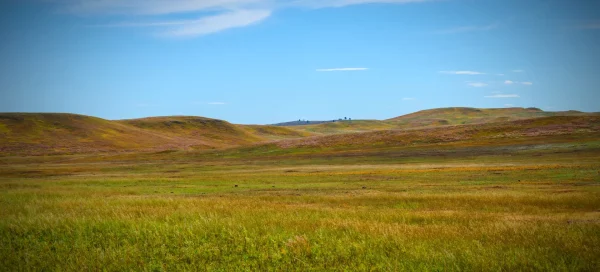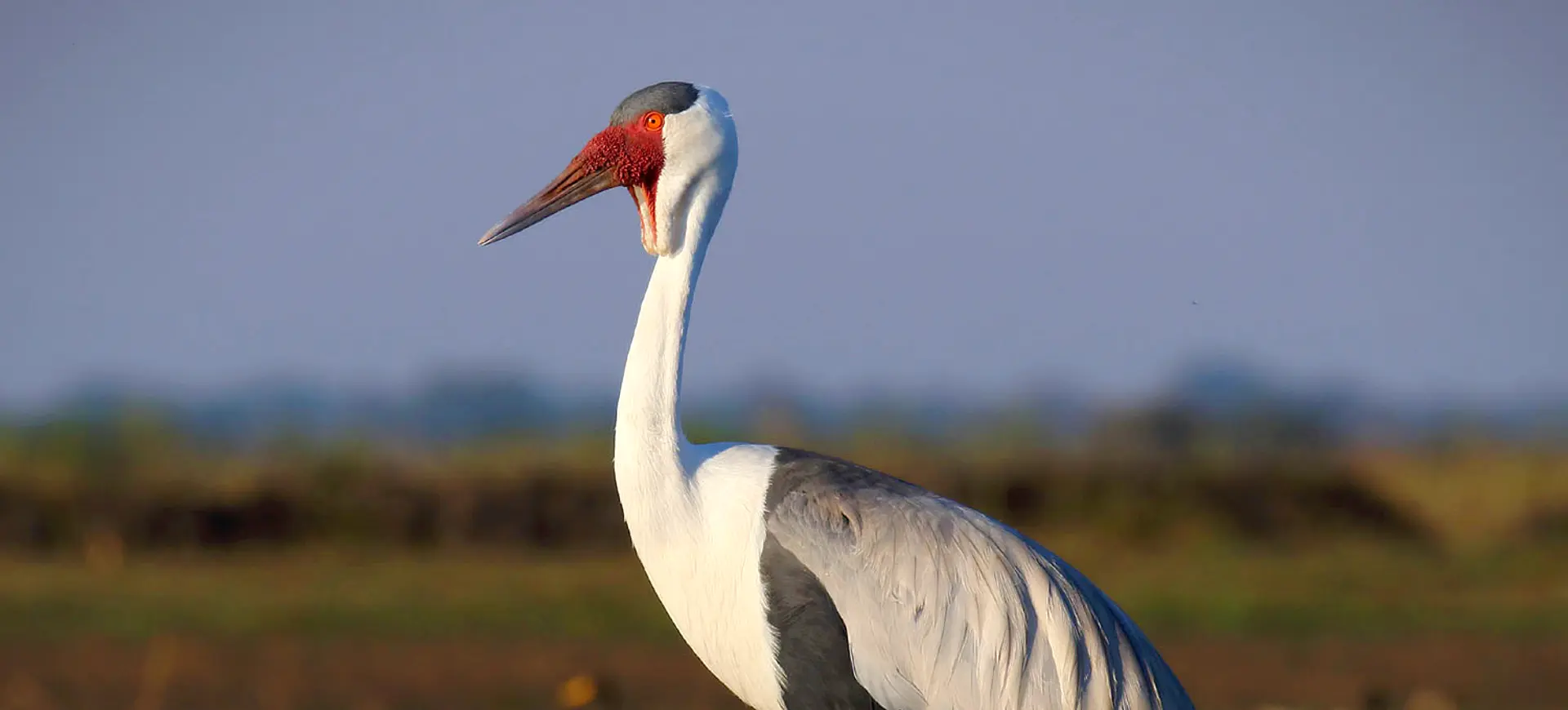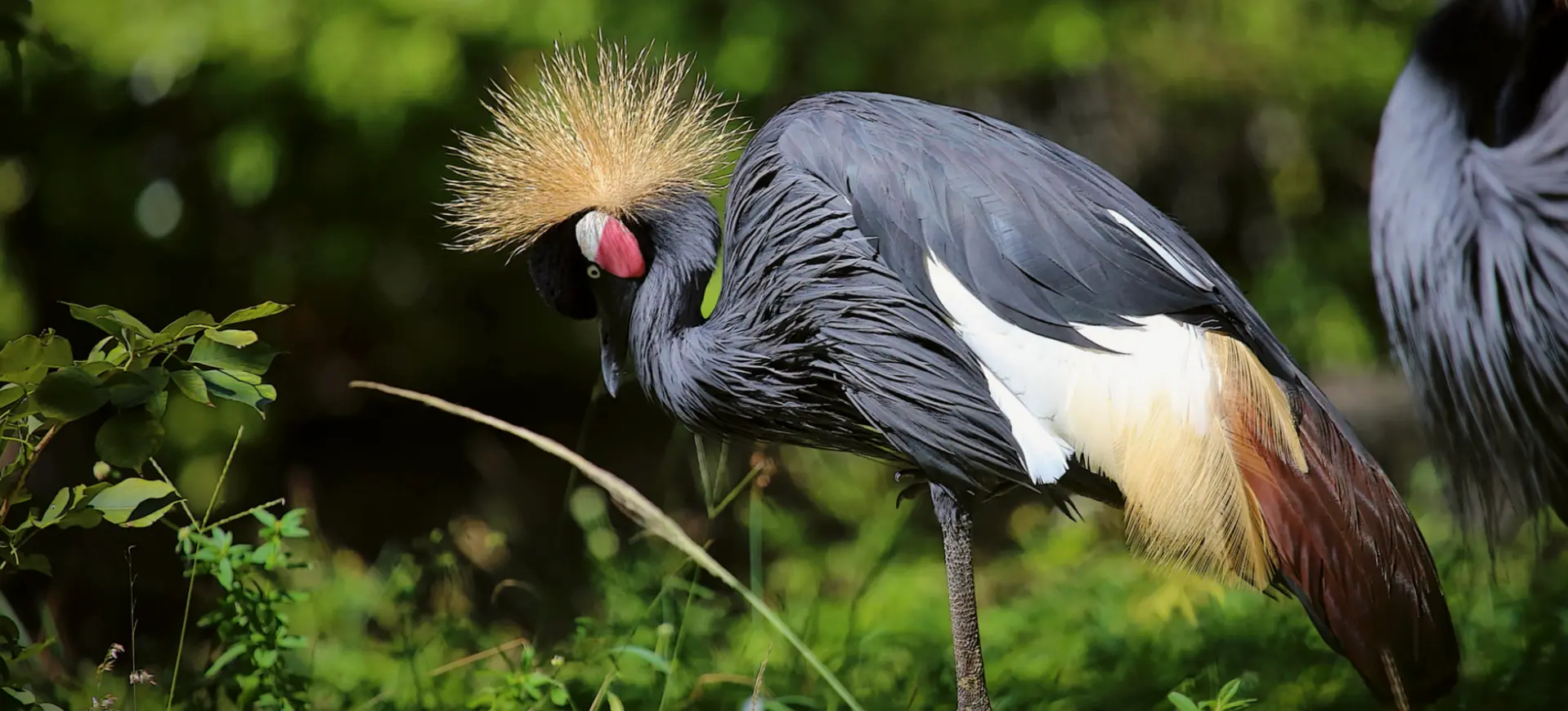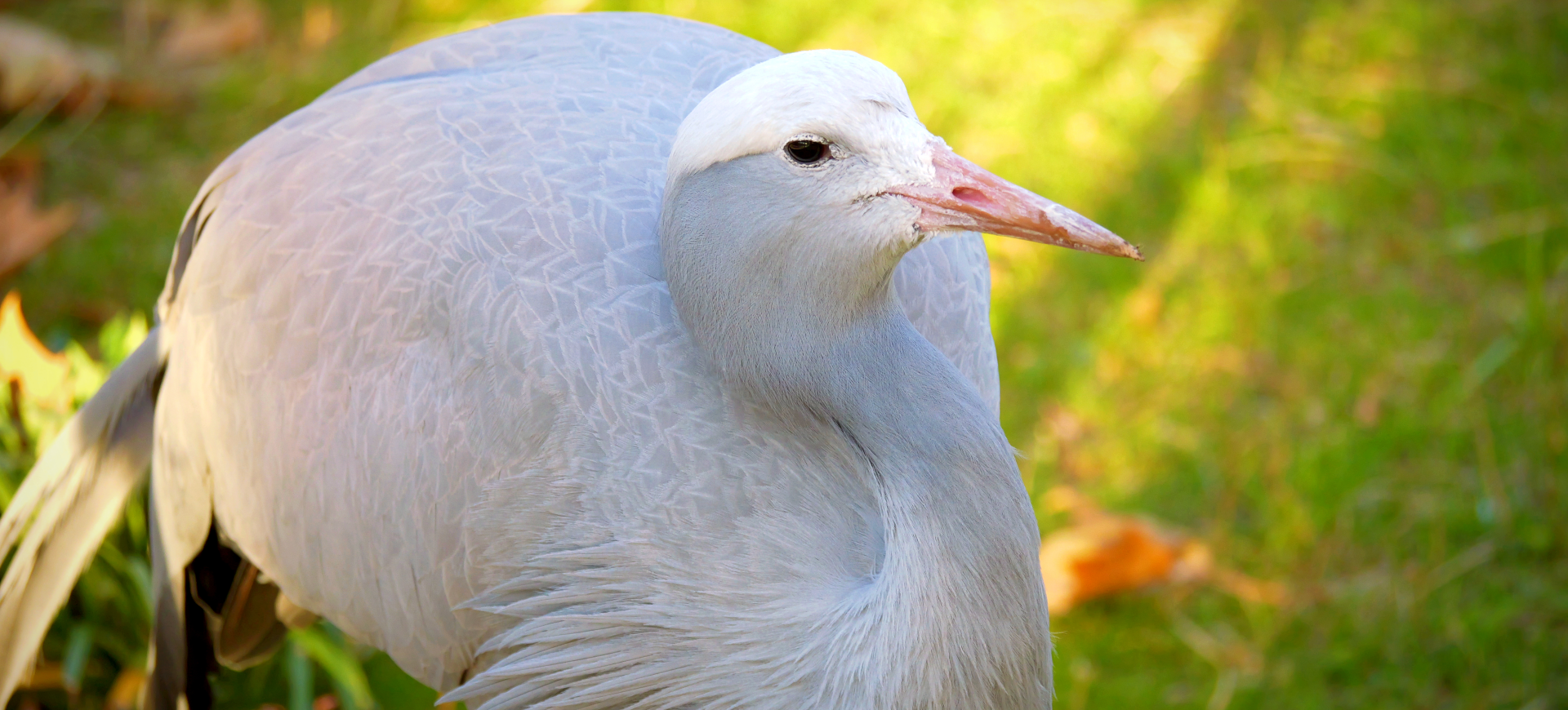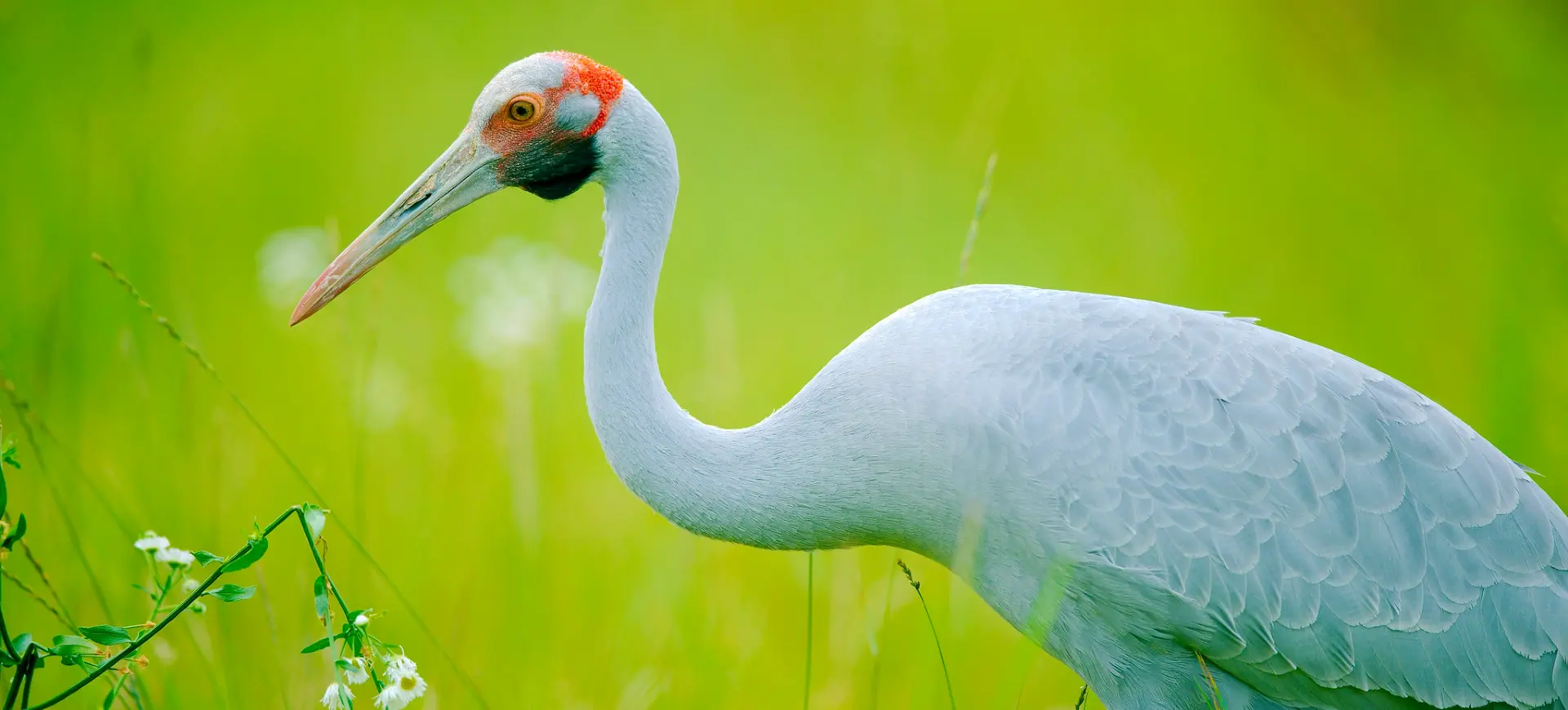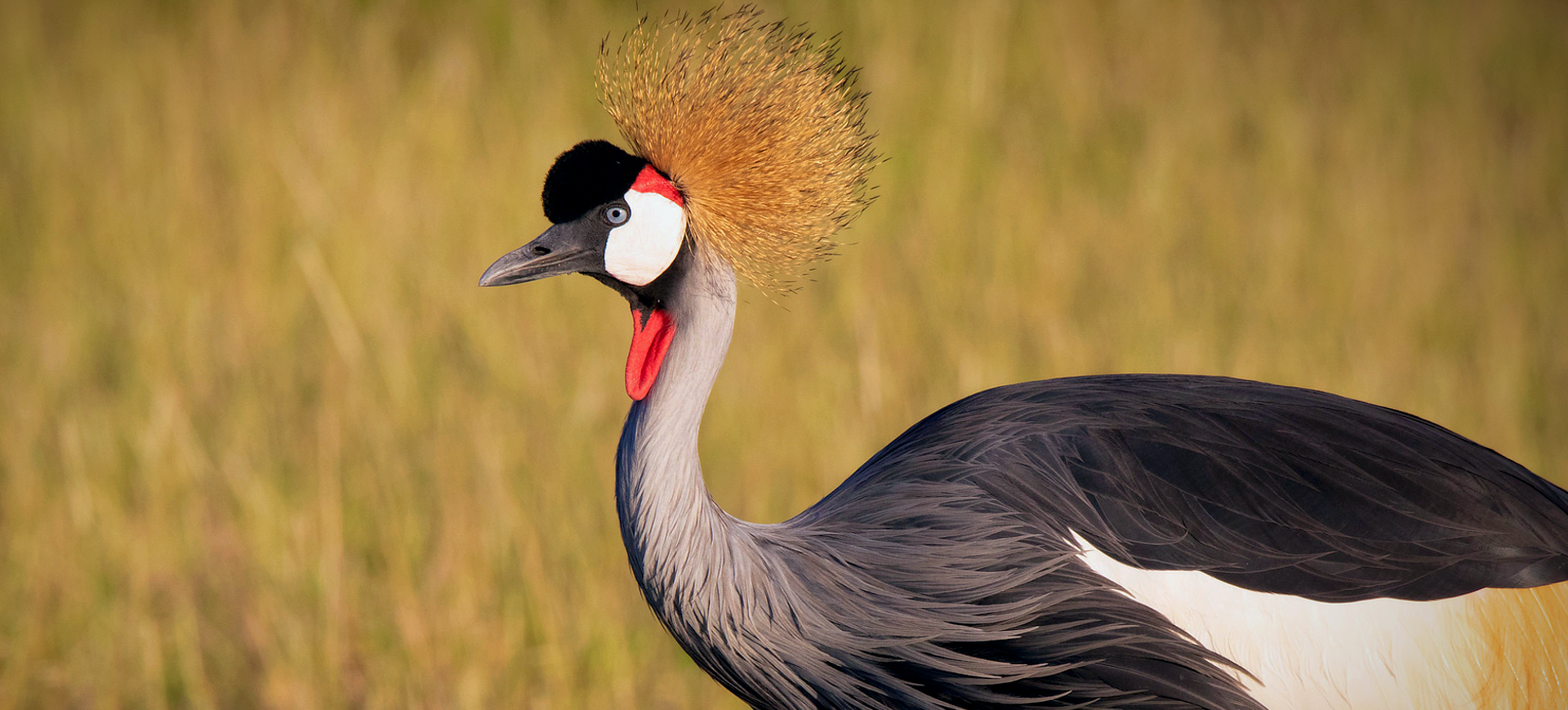Overview
The Red-crowned Crane, also known as the Japanese Crane or Manchurian Crane, is a majestic bird admired for its striking beauty and elegant dance-like movements. Recognized for its vibrant red patch on the head, it stands out against its primarily white plumage. The species is known for its role in East Asian culture, symbolizing longevity and good luck.
The Red-crowned Crane is among the largest of the crane species. It displays a form of sexual dimorphism where males are generally slightly larger than females. These birds are best known for their elaborate courtship dances that involve a complex sequence of bows, flaps, leaps, and even vocal calls to their mates. Beyond its courtship function, the dance is also seen as a form of socialization among these birds.
The Red-crowned Crane also holds the unique distinction of being a long-lived bird species. They can live up to 70 years in captivity, although their lifespan in the wild is considerably shorter, averaging around 30 to 40 years. The longevity of these birds is another reason they are associated with long life and good fortune in several Asian cultures.
Taxonomy
Kingdom
Phylum
Class
Order
Family
Genus
Species
Type
Physical Description:
The Red-crowned Crane is a magnificent creature, best recognized by its red ‘crown’ – a patch of bare, red skin atop its head. This vivid crown contrasts sharply with the bird’s predominantly white body. Its face and neck are covered in white plumage, while its eyes are pale yellow. A black and white stripe extends from the bird’s eye down to the rear of its neck.
The bird’s body and wings are primarily white, with black secondary and primary feathers. Their long, dark bill curves downward subtly, while the legs and feet are also black. Their long legs extend outwards during the flight, revealing their considerable length. Juvenile Red-crowned Cranes resemble adults but are tinged with a more brownish hue until they attain maturity.

Lifespan: Wild: ~30 Years || Captivity: ~50 Years

Weight: Male: 22 lbs (10 kg) || Female: 17.6 lbs (8 kg)

Length: Male: 4.9 ft (150 cm) || Female: 4.5 ft (137 cm)

Height: Male: 5 ft (152 cm) || Female: 4.6 ft (140 cm)

Wingspan: Male & Female: 7.5 ft (230 cm)

Top Speed: 37 mph (60 km/h)
Characteristic:
Native Habitat:
Red-crowned Cranes inhabit various wetland habitats, including marshes, riverbanks, and flooded agricultural fields. They prefer areas with dense vegetation, offering them ample food and protection. During the breeding season, they often occupy extensive marshlands, which provide ample space for their nests and courtship dances.
In winter, they migrate to unfrozen rivers, lakes, and other wetlands. Some even migrate to coastal areas or agricultural fields. Throughout their range, Red-crowned Cranes prefer shallow water environments with rich food resources.
Climate Zones:
Biogeographical Realms:
Continents:
Countries:
Diet:
Diet & Feeding Habits:
Red-crowned Cranes are omnivorous, feeding on a diverse range of food items. Their diet predominantly consists of aquatic plants, grains, berries, and invertebrates. They are fond of rooting around in wetlands and flooded fields, where they use their long beaks to probe into the soft soil in search of insects, worms, and other small creatures.
During certain seasons, they consume larger prey like rodents, small birds, amphibians, and fish. Rice, corn, and other grains form a substantial portion of their diet in agricultural areas. This adaptable feeding behavior allows Red-crowned Cranes to thrive in various habitats and withstand harsh winters when food sources may be scarce.
Mating Behavior:
Mating Description:
The mating ritual of the Red-crowned Crane is elaborate and involves a unique ‘dance.’ Both males and females bow, hop, and leap in a highly coordinated sequence, often while making various calls. This ritual serves as a bonding exercise and establishes and reinforces their lifelong monogamous pairs.
After a successful courtship, the female lays one or two eggs between April and June. Both parents share the duty of incubating the eggs for about a month. After hatching, the chicks are fed and cared for by both parents until they fledge, which occurs around 70-90 days after hatching.
Reproduction Season:
Birth Type:
Pregnancy Duration:
Female Name:
Male Name:
Baby Name:
Social Structure Description:
Red-crowned Cranes are social birds that gather in groups, particularly outside the breeding season. During the breeding season, pairs establish and defend territories. They communicate through various calls and physical displays, including the iconic dance-like behaviors often associated with crane species.
Family groups usually consist of the parents and their offspring from the current year. The young stay with their parents until the next breeding season, after which they join groups of other immature birds until they reach sexual maturity and form their pairs.
Groups:
Conservation Status:
Population Trend:
The population of Red-crowned Cranes is currently considered fragmented and declining. There are two central populations: a migratory population in the Amur Basin between Russia and China and a non-migratory population on the island of Hokkaido in Japan. As of 2021, the Amur Basin population was estimated to be around 1,000-1,500 individuals, while the Hokkaido population was estimated at approximately 1,300.
Both populations have suffered significant habitat loss due to the conversion of wetlands for agriculture, industrial development, and urbanization. Additional threats include illegal hunting, collision with power lines, and climate change.
Population Threats:
The Red-crowned Crane faces multiple threats, the most significant being habitat loss. The draining of wetlands for agriculture and industrial development has significantly reduced their natural habitats. Other human-related activities, such as building power lines and fences, pose physical threats, with birds sometimes colliding with these structures.
Pollution of waterways, mainly due to agricultural runoff, has also impacted the quality of their habitats and food supply. The species is further threatened by illegal hunting and capture for the pet trade. Climate change is another concern, as it can cause shifts in their habitats and alter their migratory patterns.
Conservation Efforts:
Conservation efforts for the Red-crowned Crane have been widespread and multifaceted. The International Crane Foundation and the World Wildlife Fund are among the organizations that have been instrumental in these efforts. They’ve undertaken projects to protect and restore crane habitats, strengthen anti-poaching measures, and conduct research and monitoring activities.
In addition, the Red-crowned Crane is legally protected in all countries within its range. Captive breeding and reintroduction programs have also boosted the species’ population. Local communities are increasingly engaged in conservation efforts, with education and awareness campaigns proving effective in changing attitudes and behaviors towards these birds.
Additional Resources:
Fun Facts
- Red-crowned Cranes are one of the rarest crane species in the world.
- They have a lifespan of up to 70 years in captivity, making them one of the longest-living bird species.
- The red crown on their head is not composed of feathers, but is actually exposed skin.
- These cranes are known for their elaborate courtship dance, which strengthens pair bonds and is used in social interaction.
- They mate for life and both parents take part in rearing the chicks.
- The Red-crowned Crane is a symbol of longevity and good fortune in East Asian culture.
- These cranes often stand on one leg while resting or when it’s cold to conserve heat.
- During migration, they can fly at altitudes of up to 5,000 feet.
- They have a diverse diet that changes with the seasons.
- In addition to their primary call, these cranes use body language for communication. For instance, a bow can mean different things depending on how it’s performed and in what context.



